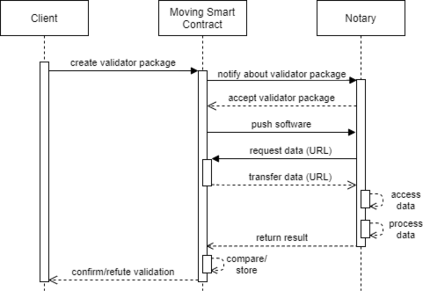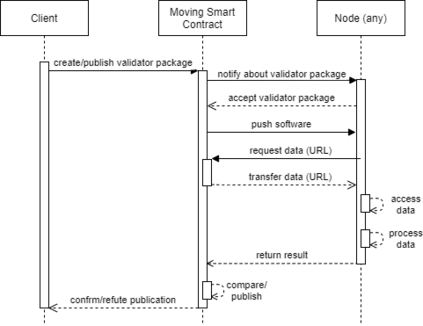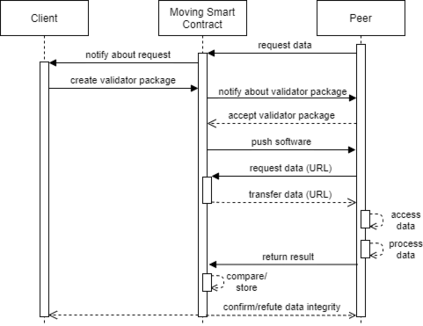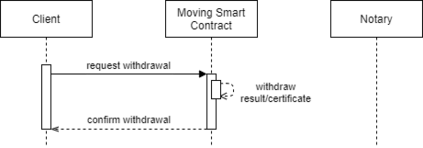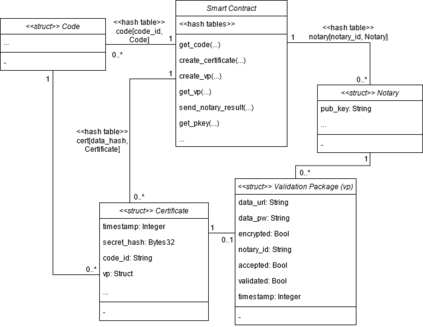Blockchains provide environments where parties can interact transparently and securely peer-to-peer without needing a trusted third party. Parties can trust the integrity and correctness of transactions and the verifiable execution of binary code on the blockchain (smart contracts) inside the system. Including information from outside of the blockchain remains challenging. A challenge is data privacy. In a public system, shared data becomes public and, coming from a single source, often lacks credibility. A private system gives the parties control over their data and sources but trades in positive aspects as transparency. Often, not the data itself is the most critical information but the result of a computation performed on it. An example is research data certification. To keep data private but still prove data provenance, researchers can store a hash value of that data on the blockchain. This hash value is either calculated locally on private data without the chance for validation or is calculated on the blockchain, meaning that data must be published and stored on the blockchain -- a problem of the overall data amount stored on and distributed with the ledger. A system we called moving smart contracts bypasses this problem: Data remain local, but trusted nodes can access them and execute trusted smart contract code stored on the blockchain. This method avoids the system-wide distribution of research data and makes it accessible and verifiable with trusted software.
翻译:屏障链提供环境,使各方可以透明和安全地进行互动,而无需信任第三方即可进行同行对方互动。 各方可以信任交易的完整性和正确性,信任系统内部链链(智能合同)上的二元代码的可核实执行。 包括链链外的信息仍然具有挑战性。 数据隐私是一个挑战。 在公共系统中,共享数据成为公共数据,并且来自单一来源,往往缺乏可信度。 私营系统使各方能够控制其数据和来源,但以透明方式进行积极的交易。 通常,数据本身不是最重要的信息,而是计算结果。 研究数据认证就是一例。 要保持数据私密,但仍能证明数据的来源,研究人员可以在块链上储存该数据的乏味值。 这种有价值要么是本地在私人数据上计算,而没有验证机会,或者从单一来源计算出来,这意味着数据必须公布并存储在链上 -- -- 一个在分类账簿上储存并传播的整体数据数量的问题。 一个我们称之为智能合同绕过这个问题的系统:数据仍为本地数据,但无法信任的链路可信任的系统可以获取,并且执行可信赖的系统可信赖的版本的版本的版本的版本的编码。


